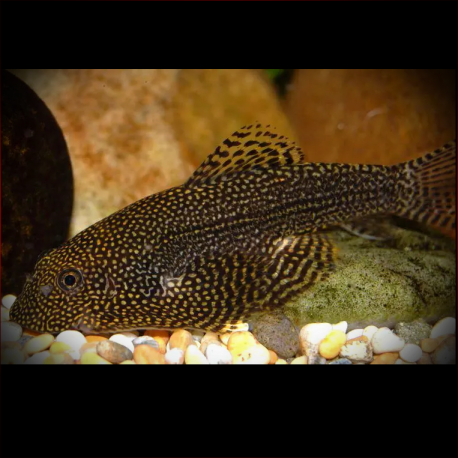More info
Datasheet
| Minimum Tank Size | 80 litres / 21.13 US gallons |
| Maximum Size | 8.0cm / 3.15inches |
| Temperature | 20°C / 68.00°F - 24°C / 75.20°F |
| Hardness | 1.01dgH / 18ppm - 10.03dgH / 179ppm |
| pH | 6.0-7.5 |
Behaviour
In terms of behaviour, Sewellia spp. are dominant among the 'sucker belly' group of loaches but are not typically aggressive towards dissimilar-looking fishes. They can be housed with small, pelagic cyprinids such as Tanichthys, Danio, Devario, and Rasbora, as well as stream-dwelling gobies like Rhinogobius, Sicyopterus, and Stiphodon, and rheophilic catfishes such as Glyptothorax, Akysis, and Hara spp. Some loaches from specific families are suitable tankmates, while others may not be, so research is essential before introducing new fish. Sewellia spp. tend to form large aggregations in the wild, making it ideal to keep a group of 6 or more together to observe their natural behavior. They exhibit territorial tendencies, with some individuals being more protective of their space, often a preferred feeding spot, and males generally being dominant. Dominance battles are visually engaging and usually involve a belly-to-belly stance with both fish raising their bodies from the substrate in an upright position. Creating a group with several individuals can reduce the likelihood of subdominant fish being targeted and helps the group feel less nervous about external activity.
Feeding and Diet
The natural diet of Sewellia spp. consists mainly of benthic algae and associated micro-organisms, supplemented with opportunistic intake of insect larvae. Home-made foods bound with gelatin and tailored to contain fresh vegetables and Spirulina are beneficial for their diet. Maintaining a mature aquarium with ample algae-covered rocks and surfaces is crucial for long-term success in feeding these loaches. In cases where growing sufficient algae in the main tank is challenging or if there are herbivorous tankmates that deplete algae quickly, having a separate tank to cultivate algae may be necessary. Providing a variety of algal types suitable for their diet is recommended to ensure proper nutrition. Vigilance is required with emaciated gastromyzontids, as corrective measures might be necessary for their recovery, including a steady source of suitable foods in the absence of competitors.
Reproduction & Dimorphism
Sewellia spp. are known to be relatively easy to breed in captivity, with successful breeding documented across several species. Breeding attempts are more successful with a suitable, mature substrate that allows eggs to develop undisturbed and provides refuge for the fry. Courtship initiates with male displays and chasing of the female, leading to spawning where eggs and milt are released into water flow, typically in strong currents. The incubation period for Sewellia eggs is yet to be documented, but once the fry hatch, providing suitably sized food like Infusoria and Artemia nauplii is crucial for their survival and growth. Sexual dimorphism in Sewellia spp. is noticeable in the head and body shape, with females appearing broader with a continuous snout near the pectoral fins, while males are slimmer with a squarer snout. Mature males develop raised tubercules on certain fins and the head, distinguishing them from females.
Habitat and Distribution
Sewellia Sp. 'Sew01' is native to central Vietnam, specifically found in shallow, fast-flowing headwaters and tributaries characterized by riffles, runs, and pools. Their habitat consists of substrates made up of bedrock, sand, and gravel with boulders, often lacking aquatic plants but featuring well-developed riparian vegetation. These loaches thrive in oxygen-rich, clear water ideal for biofilm development on submerged surfaces. Sharing similar habitats with other loach species like Annamia, Balitora, Homaloptera, and different Sewellia spp., Sewellia Sp. 'Sew01' is adapted to life in fast-flowing water, featuring flattened bodies and specialized morphological adaptations for clinging to solid surfaces in high current environments.

